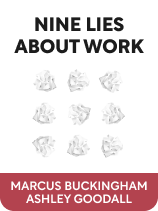

This article is an excerpt from the Shortform book guide to "Nine Lies About Work" by Marcus Buckingham and Ashley Goodall. Shortform has the world's best summaries and analyses of books you should be reading.
Like this article? Sign up for a free trial here .
Do you use organizational planning for your business? Why will it ultimately fail your business in the long run?
In a typical company, senior leadership comes up with a strategic plan for success and then communicates it to their direct reports. The message is then passed down until it reaches the execution team, which makes its own plans based on the directives from the higher-ups. The problem with this dynamics is that plans made by higher-ups tend to disregard the daily struggles of their employees who make the magic happen.
Here’s why strategic plans often fail.
Don’t Have a Strategic Plan
Organizational planning allows senior leaders to chart the future of their company. However, high-level strategic plans are largely ineffective because the senior leaders who make them tend to be out of touch with the real world. They aren’t exposed to the daily issues that your team faces, so their plans are based on assumptions and second-hand information about things that have already happened. As a result, their plans quickly become obsolete and irrelevant to the team tasked to implement them.
(Shortform note: Planning from the top-down can be such a long, drawn-out process involving out-of-touch senior leaders that companies sometimes end up acting too late or launching ill-considered projects. Case in point: In 1955, Ford planned to introduce a medium-priced car to meet a rising demand for vehicles in that price range. By the time the company released the Edsel two years later, the economy had taken a turn for the worse and—unknown to management—consumer preference had shifted to compact cars. Due to dismal sales, Ford stopped manufacturing the Edsel in 1959 and lost $250 million on the project.)
Instead, Have an Agile System
The authors contend that instead of organizational planning, businesses should have an agile system that relies on real-time, on-the-ground information. This allows the company to respond quickly, decisively, and appropriately to change. To create this system, the authors say freethinking leaders should:
1) Make as much information as possible available to your team, and encourage team members to do the same. (Shortform note: Providing team members with as much information as possible has several benefits. In No Rules Rules, Reed Hastings writes that this kind of organizational transparency builds employees’ trust in the company and its leaders and empowers them to make decisions without needing their higher-ups’ approval, which then enables them to respond quickly to change.)
2) Observe your team to see what kind of data is most helpful to them. Then, find ways to supply them with the information that can best help them make decisions. (Shortform note: While Netflix believes in empowering its employees to make decisions by giving them information, Hastings emphasizes that this method won’t work in every workplace. It’s only feasible in an organization that has a high concentration of talent and that values innovation over error prevention.)
3) Have short, weekly conversations with each team member to check on their priorities and progress, determine if they should recalibrate their tasks based on any changes, and ask if they need your help. The authors stress that quantity is better than quality when it comes to these conversations—the more you check in with your team members, the more engaged they become. (Shortform note: Even informal, 10-minute conversations can revamp your interactions with your team members and transform your team, as long as you have them regularly. In The Coaching Habit, Michael Bungay Stanier outlines seven questions that you can ask your team members for a quick coaching session, depending on the situation. These questions include, “What’s the central challenge for you?” and “How can I support you?”)

———End of Preview———
Like what you just read? Read the rest of the world's best book summary and analysis of Marcus Buckingham and Ashley Goodall's "Nine Lies About Work" at Shortform .
Here's what you'll find in our full Nine Lies About Work summary :
- The nine organizational lies and what leaders can do to address them
- Why free lunches and breakroom pool tables don't matter
- Why you should stop seeking a work-life balance






